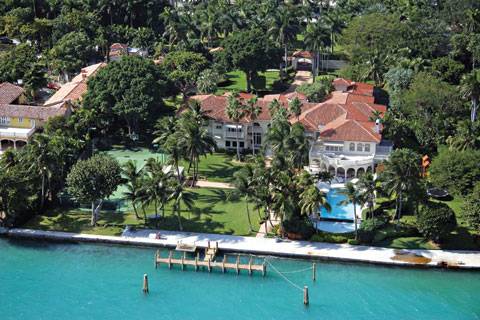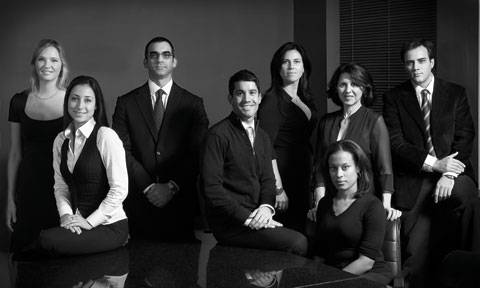The Centurion: when ultra-luxury real estate becomes collectable art.
By Laura Perlongo
Soft-spoken, even his words are aesthetically pleasing, dripping slowly into one another as he reveals his secret to inspiration: The Metropolitan Museum.
Art is an elusive little term. Manifesting itself in many ways, it is difficult to pinpoint with objective definitions, yet the transcendence of experiencing a work of art is unmistakable. Perhaps it is this phenomenon that turned The Centurion from just another elegant, ultra-luxury high rise into an esteemed collector’s item. So esteemed, in fact, that it can convince an individual looking to purchase a two-bedroom pied-à-terre into buying two homes, and paying up-front. Only on the market for a handful of weeks, buyer upon buyer feels the artistic energy inside The Centurion and, likewise, is rapidly seizing the 48 units one, or sometimes two, at a time. “It is this concept of art: art as a parallel universe to more mundane things. Once people get the idea they are in that class of conversation, it really changes their psyche,” Roy Stillman, developer of The Centurion, explains of his world-class clientele. “We are selling art that happens to also be real estate.”
But what really makes The Centurion such a stand-out piece of art? It could be its location, set square in the wealthy Plaza district, certainly one of the most desirable settings in Manhattan. Or, maybe, it is the unbeatable team of world-renowned international architects and designers including the legendary I.M. Pei and SLCE’s Jim Davidson. Or, it might be the result of traveling the globe to procure the most exquisite materials known to man. Upon considering each component of The Centurion separately, it is clear that its artfulness probably comes down to some enigmatic combination. “When you combine location, acumen, design, art, experience, and quality-when you mix all those things together-it’s a pretty much unbeatable combination,” Stillman says. Thus, The Centurion is a prime example of two plus two making five-or in this case, forty-eight-stunning homes.
Developer Roy Stillman is truly the driving force behind the livable art. Soft-spoken, even his words are aesthetically pleasing, dripping slowly into one another as he reveals his secret to inspiration: The Metropolitan Museum. “I have gone hundreds of times and I’ve learned color and balance, form and proportion-the history of these things and where they fall into a timeline of evolution and artistic development,” Stillman divulges. “Art permeates all of my work.”
It is this love of art that has allowed the young developer and his partner, Robbie Antonio, to land the top names in the industry to work on The Centurion. With his personal mantra of “whatever you do, make it the best you’ve ever done,” and his last project being the famed Metropolitan on the Upper East Side, Stillman is a grand developer in his own right. Nevertheless, he is somewhat new compared to the legendary figures rallied for The Centurion. Specifically, the fabled interior architect Jim Davidson and his firm SLCE (who Stillman also worked with for The Metropolitan) and the dream team of I.M. Pei with his exceptional son, Sandi. “Sandi worked under me for about 15 years. It was important for me to do one more together. There is a certain emotional content for me with this project,” says I.M. Pei, whose long list of venerated credits includes the Grand Louvre Pyramid.
For Stillman, an unmatched team is the most important aspect of developing. “I really like to surround myself with experts. I call it the 1927 Yankees theory,” Stillman explains. “The ’27 team was the team that no one could beat because they had the best players in every position and I use that when building my own team. If you surround yourself with greatness, odds are, you’ll win.” But it is hard to get the best players without an exceptional draw. The greatest names in architecture, the Pei’s and Davidson, are accustomed to turning down jobs, so Stillman had to have something extraordinary to offer. “They just want to know that their legacy is in the hands of someone who cares, that they can enhance it, rather than detract from it,” Stillman explains. “My love of art resonates in everything I do and after that impression starts getting conveyed to the person at the other side of the table; I think they feel safe and peaceful and then they start getting excited.”
And excited they should be. As Michele Conte, the famed broker at Brown Harris Stevens now working with Stillman, exclaims, “I have never seen the public respond to a building in this way. We will be fully sold by June or before.” Luckily for Stillman, he won’t have time to be bored. Another of his ingenious projects, The Trump International Hotel & Tower in Fort Lauderdale, is also set for completion in 2008. Working directly with Donald Trump to make this the defining symbol of the booming area, he has kept his standards high. “Fort Lauderdale is on an uptrend. I said ‘I don’t want to do this job unless I’m here to make it the best building in the region, let’s be the defining statement,’ and, we are.” It is this mind-set that will give Stillman the longevity to transform many cities throughout his career. “People come up to me and say, ‘You know what’s going to happen, Roy? When people are doing a newscast here, your building will be the backdrop because it is the symbol of Fort Lauderdale.'”
Likewise, it is evident that The Centurion will quickly become a Manhattan landmark. If not only for its indisputable beauty and famous contributors, but also for its small details, like the rare French Limestone that creates the building’s posterior, things that will largely go unnoticed. Stillman clarifies: “People don’t know what’s on the back of your building. You never see it, but that is my message. You know if we spent all this money and all this time and effort and trouble to design the back of something that you are not going to know about, imagine what else we did.”
We can’t wait to find out.





















